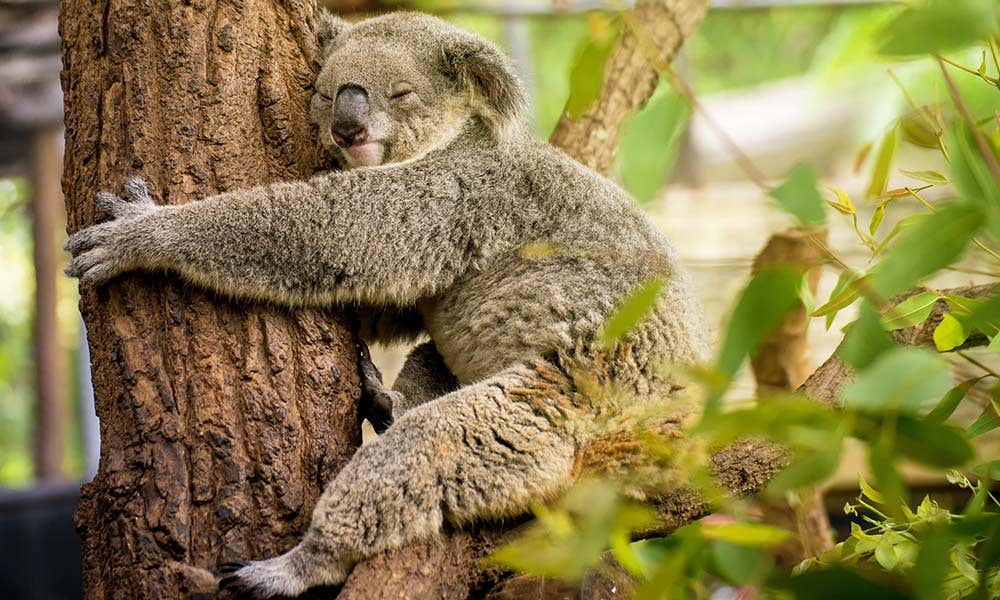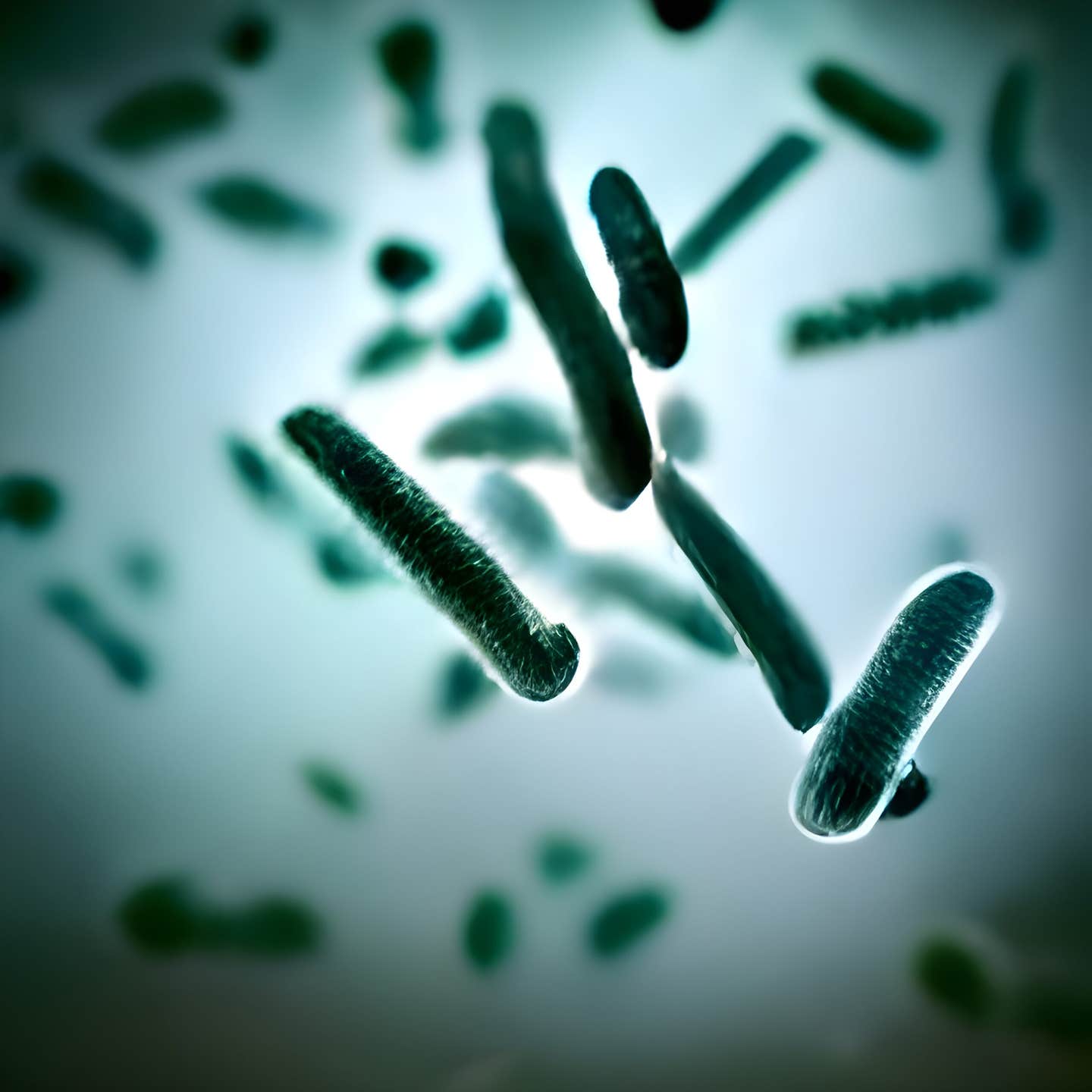Important discovery can help extinguish global threat to koalas
University of Queensland virologists are a step closer to understanding a mysterious AIDS-like virus that is impacting koala populations.

[Dec 11, 2022: Michaela Blyton, University of Queensland]
University of Queensland virologists are a step closer to understanding a mysterious AIDS-like virus that is impacting koala populations. (CREDIT: Shutterstock)
University of Queensland virologists are a step closer to understanding a mysterious AIDS-like virus that is impacting koala populations differently across state lines.
Dr Michaela Blyton and Associate Professor Keith Chappell from the Australian Institute for Bioengineering and Nanotechnology (AIBN) and School of Chemistry and Molecular Biosciences, have uncovered another piece of the puzzle in their quest to halt the koala retrovirus known as KoRV - a condition strongly associated with diseases that cause infertility and blindness.
“We’ve learned that the retrovirus is far more prevalent in New South Wales and Queensland koalas, compared to the southern populations in Victoria and South Australia,” Dr Blyton said.
“Uncovering crucial patterns like these helps us learn how the disease is evolving, how it’s spreading, and how we can contain the damage through anti-viral medication or koala breeding programs.”
Related Stories:
Koala numbers have fallen rapidly over the past decade due to widespread land clearing, climate change induced weather events, and disease.
Dr Blyton’s research has already established the link between KoRV and chlamydia, cystitis and conjunctivitis, which suggests the virus weakens the animal’s immune system.
In the latest research published by the Proceedings of the National Academy of Sciences, Dr Blyton and Dr Chappell found KoRV is only present in the genome of koalas from Queensland and NSW while those in Victoria and South Australia appear to be free of the numerous subvariants.
Retrovirus infection is synonymous with disease; however, retroviruses can also become endogenous (incorporated into the germline) and directly contribute to a species’ genetic makeup. (CREDIT: PNAS)
Dr Blyton said this discovery strengthened the theory that the virus could be contributing to heightened disease levels in northern koala populations.
“Our previous work showed a definite link between KoRV and chlamydia in koalas, and these latest findings indicate that northern koalas should be treated very differently to southern koalas,” Dr Blyton said.
Research suggests that sporadic evolution and local transmission of the exogenous subtypes have occurred within northern Australia, but this has not extended into animals within southern Australia. (CREDIT: PNAS)
“It might mean that in the short term, koala relocations in the north are limited so we're not introducing new virus subtypes into healthy populations.”
Dr Blyton said a final solution may be some time away, but the latest findings were a big step towards nullifying the threat posed by disease.
“Ultimately, we might see some kind of anti-viral treatment, or at least improvements to koala breeding programs, but for now this is great news for a species facing threats on multiple fronts,” Dr Blyton said.
Here are 10 interesting facts about koalas:
1. Koalas aren’t bears – they’re marsupials!
You might hear the term ‘koala bear’ being tossed around when it comes to these fluffy animals. While they might look bear-like with their round ears and big black nose, they actually share more characteristics with other marsupials like the wombat.
2. Baby koalas are too cute (this is indeed, a fact).
Called ‘joeys’, baby koalas develop in their mother’s pouch for about six months. After this time, they’ll ride on their mum’s back for another six months, only using the pouch to feed and sleep.
3. Koalas can be found in southeastern and eastern Australia
While koalas are a national symbol of Australia’s unique wildlife, they can only be found in the wild on the southeast and eastern sides of Australia, along the coastlines of Queensland, New South Wales, South Australia and Victoria. They live high up in eucalyptus trees of native bushlands and forests, usually perched between the forks of the tree’s branches.
4. They have a very supportive butt…
Living in trees and being wedged between rough branches requires a lot of support! Luckily, the koala has strong cartilage at the end of their curved spine, allowing them to make eucalyptus trees a comfortable home!
5. They’re fussy eaters!
Koalas survive on a diet of eucalyptus leaves and can eat up to a kilogram a day! Pretty impressive, considering eucalyptus is poisonous to most animals.Their special fibre digesting organ, called a caecum, helps to detoxify the chemicals in the leaves. However, they can be quite picky eaters, eating less than 50 of 800 eucalypt species. Even then, they’ll often choose leaves at the top of the tallest trees that contain more liquid and nutrients – only the best for Australia’s koalas!
6. ‘Koala’ is thought to mean ‘no drink’ in the Australian Aboriginal language
It was thought that koalas didn’t need to drink because of the moisture they get from munching on juicy eucalyptus leaves all day. However, they do drink from various water sources when needed, especially during heatwaves and in times of drought.
7. Koalas can sleep up to 18 hours a day
Despite the rumours, koalas don’t ‘get high’ or ‘drugged out’ on eucalyptus leaves. It’s because the leaves are so low in nutrients that koalas need more sleep than most animals which basically helps them conserve energy.
8. Koala Chlamydia is a serious disease
But it’s not the same strain of Chlamydia that affects humans. Many koala populations are vulnerable to Chlamydia and it usually manifests when they’re in stressful situations. The disease can cause blindness and reproductive tract infections.
9. Koalas are losing their homes to excessive tree-clearing
Many koala populations are faced with nowhere to go when their forest habitat is destroyed by deforestation. Just in the last two years, tree-clearing has tripled in New South Wales, leaving important koala habitats incredibly fragmented or completely lost. With their trees gone, koalas are spending more time on the ground in search of food and shelter. Sadly, this is when they’re most vulnerable to being hit by vehicles, attacked by dogs and falling ill to stress-induced diseases like chlamydia. As a result of all these growing pressures, koalas are now endangered in NSW, as well as QLD and the ACT.
10. Sadly, koala numbers are on the decline
Sadly, koala numbers are on the decline. Their numbers have been falling further and further every year due to deforestation and disease. In early 2022, koalas were officially uplisted to endangered in QLD, NSW and the ACT. Many struggling Australian species, like our koalas, are being pushed even further towards the brink of extinction, and we need to take action now to prevent losing them forever.
For more science and technology news stories check out our New Discoveries section at The Brighter Side of News.
Note: Materials provided above by University of Queensland. Content may be edited for style and length.
Like these kind of feel good stories? Get the Brighter Side of News' newsletter.



